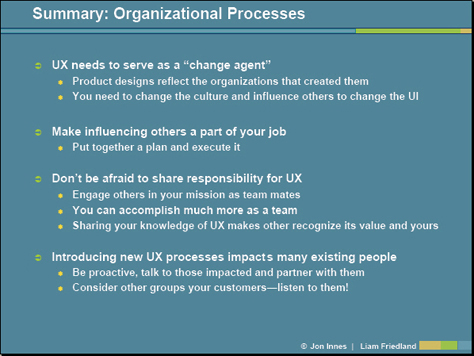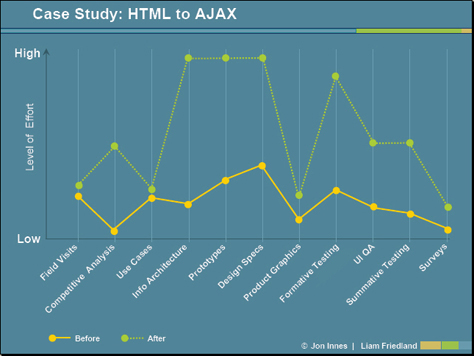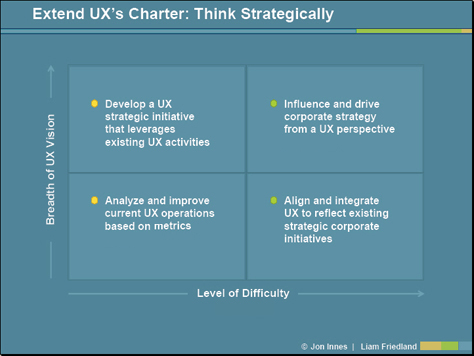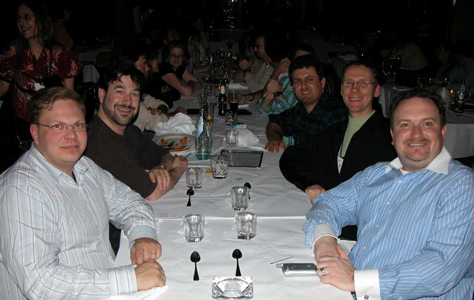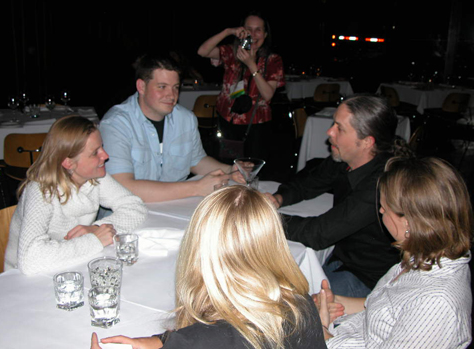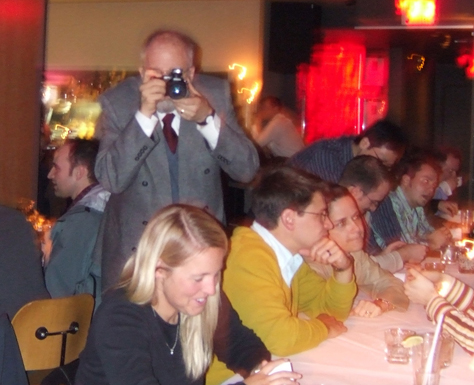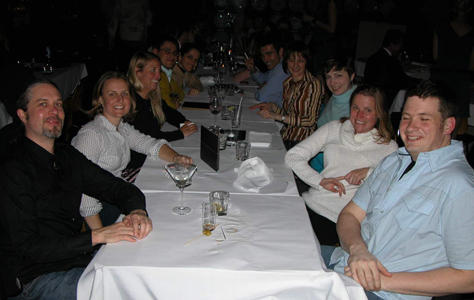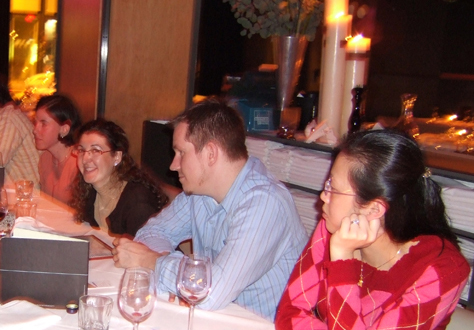Course: Repositioning User Experience as a Strategic Process
Presenters: Liam Friedland and Jon Innes
This course explored the operational, organizational, and strategic impacts of user experience groups within product development companies and provided a conceptual framework for relating UX activities to strategic business processes.
After describing the business pressures on UX groups within corporations—including shrinking profit margins, outsourcing, and downsizing, but most importantly, the fact that the role of user experience is “unclear to many key decision makers”—Friedland and Innes explained why its role is now strategic, as shown in Figure 1. “A UX team can help define a company’s overall strategy. … We want to be sure people think of user experience and innovation as related.” This is the new value proposition of user experience.
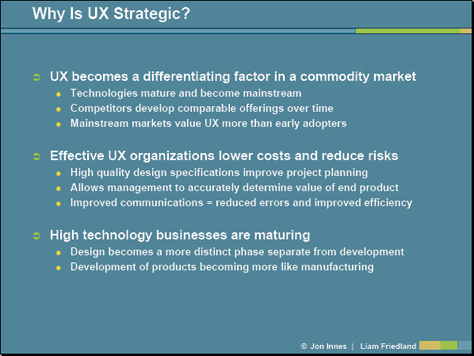
Friedland and Innes, shown in Figures 2 and 3, respectively, told us that UX professionals need to overcome these common perceptions:
- A UX group is a consulting or service organization.
- “Design makes things look good.”
- Usability testing finds problems once a product is implemented.
- User experience is “not a core business competency.” It is “important, but not essential.”
- UX professionals don’t understand business.
In their view, professionals working in user experience must instead ensure that
- user-centered methods inform product planning and strategy
- people perceive that user experience
- is strategic and “essential to product development”
- is capable of making “key contributions throughout the development cycle”
- has demonstrable and wide-ranging business value
- comprises “quantifiable, reproducible, and high-quality processes”

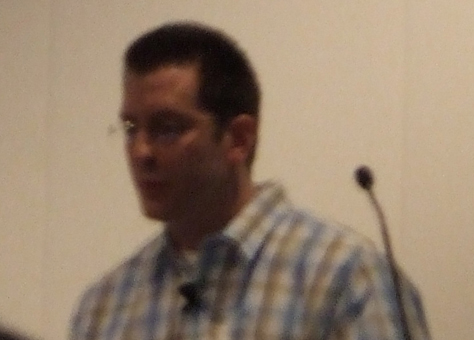
Operational Processes
Looking at key operational processes for user experience, Friedland and Innes highlighted the importance of evangelizing the business value of UX techniques and deliverables and the role of user experience in the product development lifecycle. They described research and design as “symbiotic operational skills” and outlined the respective areas of expertise and deliverables of user research and design, saying:
- “User research is useful only when the information it creates reaches others and impacts organizational behavior.”
- “Design is useful only when it generates specifications from which products can be built.”
After listing the user research and design activities that can potentially occur during the various phases of a product development lifecycle, they remarked, “You never have time for all this stuff.” They spoke about the “UX Sweet Spot”—the point at which UX activities yield the highest return on investment (ROI) during the planning phase of a development cycle, which relates to the ability of UX activities to influence product direction. UX activities that occur late in the product development lifecycle—like usability validation—still add value, but have less impact, because of the high cost of making changes to a product at that point. They also showed differences in emphasis upon typical UX activities, depending on whether a UX group has a design, usability, or UX orientation. Friedland and Innes emphasized, “It’s critical to move beyond cost justification to ROI.” Figure 4 shows how UX groups can avoid the need to justify the cost of UX activities.
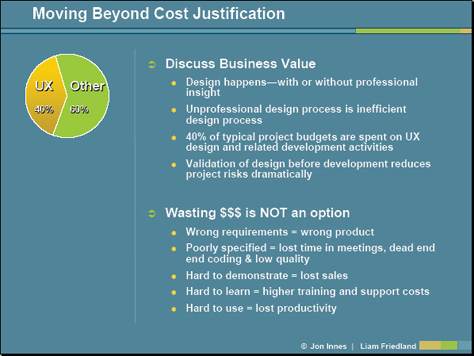
Speaking about the importance of measuring ROI, Friedland and Innes said, “Everything becomes easier when senior management tracks usability metrics and understands how they relate to success.” ROI can highlight three different types of benefits: lower costs, increased profits, and/or increased market share. “Target your ROI talks around what the person you’re talking to cares about.” For example, one might focus on internal benefits—such as managing risks, increasing revenues, or reducing costs—or external benefits—such as increasing users’ productivity, reducing the need for training, reducing the number of errors users make, or reducing support costs. Figure 5 summarizes operational processes for user experience.
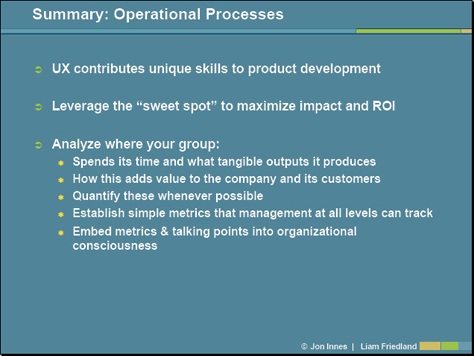
This part of the course concluded with a group exercise in which participants analyzed the current state of operations in their UX groups, including the ROI for their UX activities.
